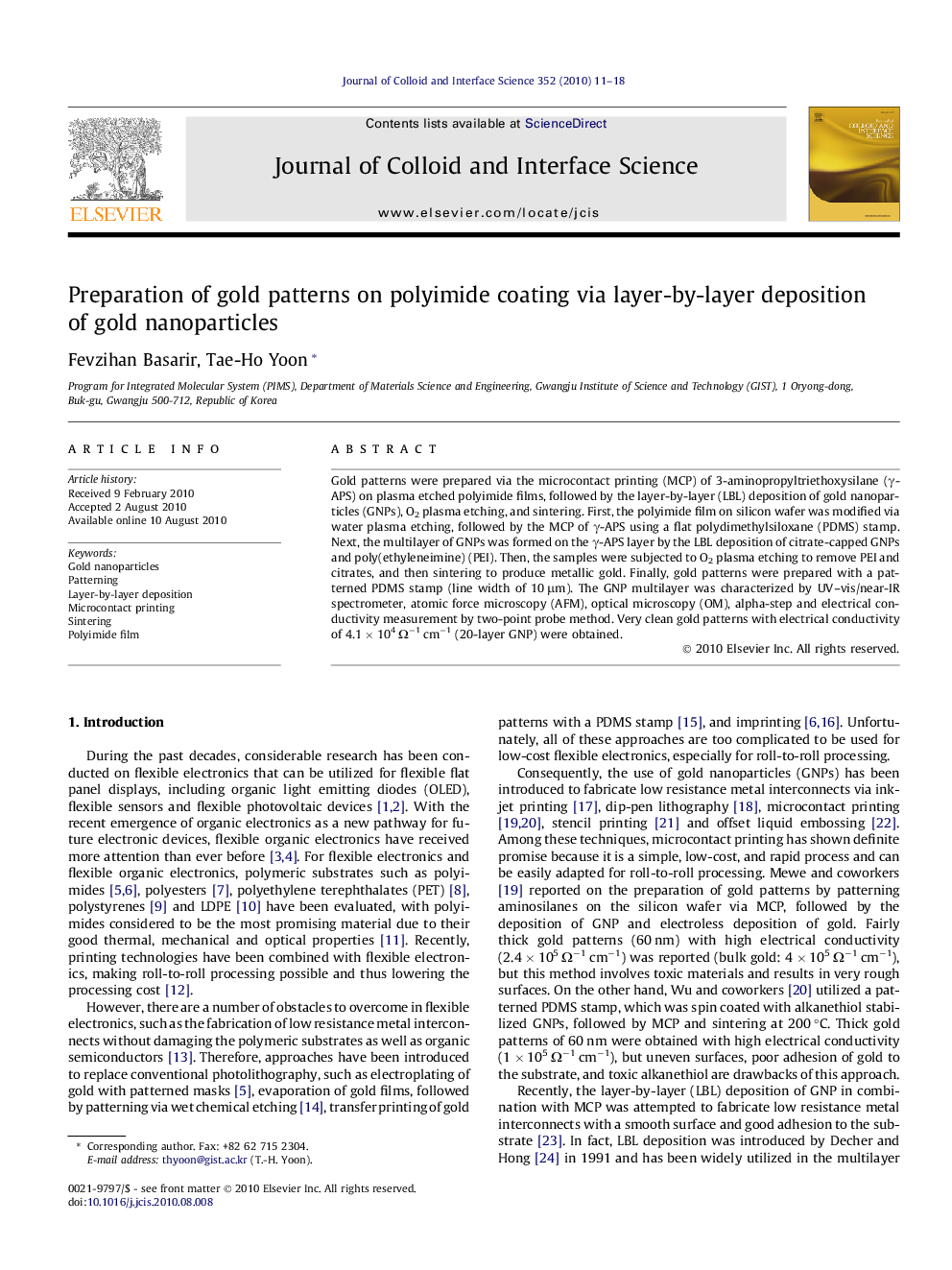| Article ID | Journal | Published Year | Pages | File Type |
|---|---|---|---|---|
| 609258 | Journal of Colloid and Interface Science | 2010 | 8 Pages |
Gold patterns were prepared via the microcontact printing (MCP) of 3-aminopropyltriethoxysilane (γ-APS) on plasma etched polyimide films, followed by the layer-by-layer (LBL) deposition of gold nanoparticles (GNPs), O2 plasma etching, and sintering. First, the polyimide film on silicon wafer was modified via water plasma etching, followed by the MCP of γ-APS using a flat polydimethylsiloxane (PDMS) stamp. Next, the multilayer of GNPs was formed on the γ-APS layer by the LBL deposition of citrate-capped GNPs and poly(ethyleneimine) (PEI). Then, the samples were subjected to O2 plasma etching to remove PEI and citrates, and then sintering to produce metallic gold. Finally, gold patterns were prepared with a patterned PDMS stamp (line width of 10 μm). The GNP multilayer was characterized by UV–vis/near-IR spectrometer, atomic force microscopy (AFM), optical microscopy (OM), alpha-step and electrical conductivity measurement by two-point probe method. Very clean gold patterns with electrical conductivity of 4.1 × 104 Ω−1 cm−1 (20-layer GNP) were obtained.
Graphical abstractOptical microscope images of patterned 20-layer gold nanoparticle film; as-deposited (A) and O2 plasma etched and sintered (B).Figure optionsDownload full-size imageDownload high-quality image (73 K)Download as PowerPoint slideResearch highlights► H2O plasma etching on polyimide increased adsorption of γ-APS and thus GNPs. ► GNP multilayer was prepared by microcontact printing of γ-APS, followed by LBL deposition. ► 20-layer GNP exhibited high electrical conductivity of 4.1 × 104 Ω−1 cm−1. ► Very clean patterns of gold were prepared on polyimide.
